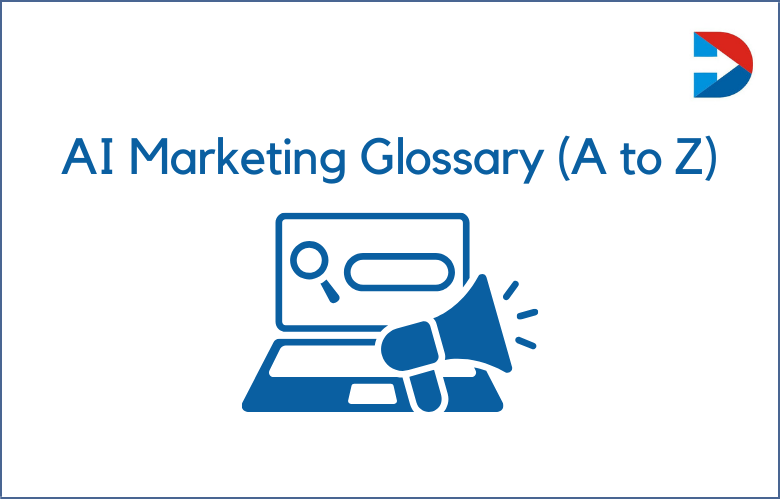The era of big data has brought forth the need for smart and efficient ways to collect, analyze, and interpret data.
One of the emerging technologies that have come to the forefront in this regard is knowledge graphs. In simple words, a knowledge graph presents information in the form of a connected network that enables you to see the relations between different data points.
The applications of knowledge graphs are vast, ranging from healthcare to finance and from entertainment to e-commerce. We will explore the concept of knowledge graphs, its benefits, and how consulting services can help you unlock the insights hidden within your data.
What are Knowledge Graphs?
A knowledge graph represents data in the form of a connected network of entities and relationships. Unlike traditional databases, which store information in tables and rows, a knowledge graph uses a graph structure to model data.
This means that data is stored as nodes, which represent entities, and edges, which represent relationships between entities.
For instance, a knowledge graph of a hospital could have nodes representing patients, doctors, and nurses and edges representing the treatments, diagnoses, and interactions between them. The graph structure enables a better understanding of the relationships between different data points.
Navigating the Digital Landscape: How Knowledge Graphs Can Help
As the amount of information available on the internet continues to grow at an unprecedented rate, navigating the digital landscape has become an increasingly daunting task.
In order to make sense of this vast sea of data, new approaches to information retrieval and processing are needed.
Knowledge graphs, powerful tools for representing and organizing complex knowledge domains, offer a solution to this problem by providing a powerful framework for understanding large amounts of data in an intuitive and accessible way.
Knowledge graphs, at their core, are structured databases that represent sets of concepts and their relationships to one another. By organizing information in this way, knowledge graphs allow users to navigate large and complex datasets in ways that traditional databases and search engines simply cannot.
For example, knowledge graphs can be used to create visual representations of data that allow users to easily explore the relationships between different concepts and the broader context in which they exist.
From Data Overload to Actionable Insights: Unlocking the Power of Knowledge Graphs
In today’s digital age, where vast amounts of data are generated each day, the need to extract actionable insights from this data has become more essential than ever.
Traditional data management techniques have proven to be insufficient in handling the complexity and sheer volume of data generated. This has led to the emergence of a more advanced solution called Knowledge Graphs.
A Knowledge Graph is a powerful technology that leverages Linked Data principles and graph theory to transform data into an interconnected network of actionable insights. It is a way of representing knowledge in a machine-readable format that makes it easier to discover, explore, and analyze data.
Knowledge Graphs have the ability to connect disparate data sources, disambiguate entities, infer relationships, and recognize patterns. This results in a more accurate interpretation of the data, which can then be used to uncover insights that help drive business decisions.
Unleashing the Potential of Knowledge Graphs for Data-driven Decision-Making
In today’s data-driven world, knowledge graphs have emerged as a crucial technology that organizations across various industries are using to manage and leverage key business data.
A knowledge graph is a means of organizing and structuring data in a structured and semantically rich way, providing users with a comprehensive overview of the relationships between data points and enabling them to identify critical insights that can inform decision-making.
By leveraging this powerful technology, organizations can extract real value from their vast amounts of structured and unstructured data.
Through the creation of a knowledge graph, businesses can harmonize data from multiple sources, enabling them to identify valuable insights and make informed decisions based on data-driven evidence.
Moreover, knowledge graphs can integrate with advanced analytics tools and machine learning algorithms, helping organizations uncover more significant patterns and trends that may be otherwise hidden in their data.
Cracking the Code: How Knowledge Graphs Transform Consulting Services
In recent years, the consulting industry has undergone a significant transformation thanks to the emergence of knowledge graphs and their ability to revolutionize data management.
Knowledge graphs are structured semantic data frameworks that enable organizations to link and manage data more intelligently. By releasing the full potential of data, knowledge graphs allow consulting firms to deliver more value to their clients.
The benefits of utilizing knowledge graphs in consulting services are numerous. Firstly, knowledge graphs enable consulting firms to mine and visualize data more effectively.
They provide an overview of the relationships between different data points, thereby offering insights and predictions. This functionality enhances the efficiency of consulting services, as the time required to extract and analyze data is significantly reduced.
Benefits of Knowledge Graphs
Knowledge graphs offer several benefits that make them an attractive option for businesses. Some of these benefits are as follows:
Better Insights:
A knowledge graph can provide better insights by uncovering hidden patterns and relationships between different data points.
Improved Search:
Traditional search engines rely on keywords to find information, whereas knowledge graphs use graph-based algorithms to search and deliver more relevant results based on the context.
Enhanced User Experience:
By presenting data in an organized and connected manner, knowledge graphs can provide a more intuitive and interactive user experience.
Streamlined Operations:
Knowledge graphs can also streamline operations by automating processes, reducing redundancies, and improving efficiency.
Consulting Services That Can Help You Unlock the Power of Knowledge Graphs
The implementation of knowledge graphs requires a significant amount of expertise and technical know-how.
That’s why consulting services can be instrumental in helping businesses unlock the full potential of knowledge graphs. The following are some of the consulting services that can help you implement knowledge graphs:
Data Transformation:
Consulting services can help you transform your data into a graph structure and integrate it with existing systems.
Design and Implementation:
Consulting services can design and implement a knowledge graph that caters to your specific business needs.
Data Modeling:
Consulting services can help you create a data model that defines the entities, relationships, and properties of your data.
Training and Support:
Consulting services can provide you with training and support to help you understand and operate the knowledge graph.
Successful Implementation of Knowledge Graphs:
A Case Study: The implementation of knowledge graphs has already led to significant improvements in various industries. One such example is the German news agency, Deutsche Presse-Agentur (DPA).
DPA implemented a knowledge graph to improve its news retrieval and content management system. The knowledge graph enabled DPA to analyze news stories as a network of entities and relationships, helping them produce more relevant and personalized content.
Conclusion:
Knowledge graphs have emerged as an effective tool to transform data into actionable insights. They enable businesses to extract valuable information from vast amounts of data and present it in a meaningful way.
Consulting services can assist businesses in implementing knowledge graphs, helping them to make better decisions, streamline their operations, and improve customer experience.
As industries continue to generate an ever-increasing amount of data, knowledge graphs may well be the key to unlocking the true potential of data-driven insights.




